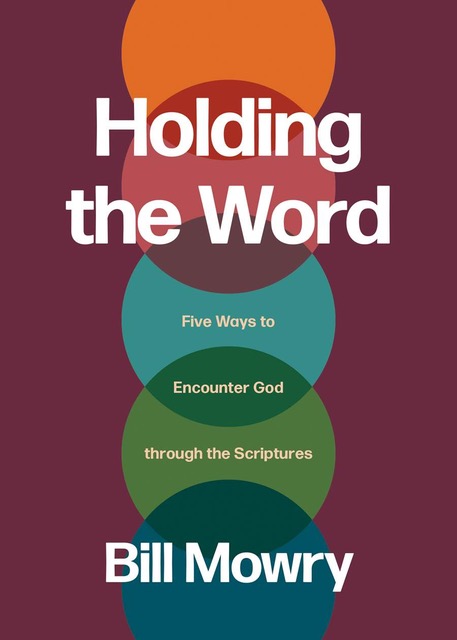WHO is this person in brown? It’s the UPS delivery person! I love seeing the chocolate-brown UPS truck pull up to my house. The sight of the brown truck triggers an anticipation of a package. However, there can be a downside to this brand’s sameness.
Several years ago, my Navigator staff friend Jerry made this observation:
“The Navigators is like the UPS guy (when they were all guys!). We can spot them by the brown color of their trucks, their brown shorts, and the little black tracking box. UPS is immediately recognizable because everything looks the same! No matter where you go the chocolate brown is there. Our ministries are a lot like this. They look the same no matter where you go.”
Over the years, I’ve thought a lot about what Jerry said. A successful brand like UPS triggers instant recognition. In the marketplace, a brand’s consistency brings financial success. In ministry settings, though, this sameness of look can be a ministry’s death.
Now, The Navigators is not the only ministry marked by sameness. Countless churches and other ministries struggle with this trend. I think the issue is not brand recognition (a good thing) but a standardization of ministry forms (sometimes a bad thing). Authors Frost and Hirsch write that “It sometimes seems as if there is some form of template at work in evangelical churches all over the world, regardless of language and culture.” Sameness in ministry look and practice is a global challenge.
I think our Lord is too big and too beautiful to box ministry into one brand or one standardized form. Ministry is more than a franchise — packaging one successful ministry approach to be replicated from place-to-place. While we must gather around biblical truth, values, and mission, the expression of these shared components should be as diverse as God’s creation. How do we move from the sameness of look and form to fresh and innovative ministry expressions? It starts with farming the farm that’s given to us. What does farming have to do with ministry?
I’m shaped by lots of authors but one in particular has shaped my thinking in recent years — the nationally known novelist, poet, and farmer, Wendell Berry. Though he writes to preserve agrarian values, Berry’s insights are relevant to ministry. Here’s an example: “You need to farm the farm that’s given to you.” In other words, we need to know our “place”— our community, church, or ministry — so we can “farm the farm that’s given to us.” Here’s an expanded explanation of what he means:
“The goal of intelligent farmers, who desire the long-term success of farming, is to adapt their work to their place . . . you have to fit the farming to the land … to the needs and abilities of the farm’s family and to the local economy.”
Farming the farm given to us is a no-brainer in agriculture. You can’t grow pineapples in New Hampshire or rice in Arizona. We must “understand the nature of a particular place, [this] means that farmers must tend farms that they know and love, in the company of neighbors that they know and love.” Successful farmers take the time to adapt their crops and practices to their places. Ministry leaders should do the same. This process of adaptation is rooted in one simple motivation — love.
We farm the farm given to us because we love our ministries. “The farmer,” writes Berry, “must tend farms, farms they know and love, farms small enough to know and love.” Effective farmers love by “tending” the soil and crops. If farmers tenderly watch and care for their farms then surely we should tend and care for one another. We follow the farmer’s example and carefully tend our places of ministry because we love our place and our people.
Loving is expressed in looking. For the farmer, knowing one’s place “means walking and looking, paying attention, season after season, for many years. . . .” “People who don’t care, or care enough to know, don’t watch” writes Berry. Looking is the gateway to knowing someone or someplace. Because looking builds relationships, we patiently walk our neighborhoods, watch the people-flow in churches, or wander work corridors — all in an effort to observe to know people. Patient looking is an act of love.
Farming the farm given to us means knowing our limitations. Berry comments that:
“The farm is limited by its topography, its climate, its ecosystem . . . and by the preferences and abilities of the farmer. The true husbandman shapes the farm within an assured sense of what cannot be and what it should not be.”
I’ve watched churches or ministries rush to “buy into” a particular program only to discover they lacked the gifted people or the number of people needed to run the program. Instead of assessing their limitations and strengths, leaders opt for the easy route of purchasing a ministry package or implementing a prescribed program. Too often the impulse to adopt is motivated by results. In our desire for success, results steam roll over the wisdom of knowing one’s limitations. If I understand my limitations, I naturally conclude that my results will be different from others. Limitations influence our expectations.
Learning to farm our farms by loving, looking, and knowing our limitations leads to a logical conclusion: new solutions are best developed locally. Farmers face a tension between accepting programs designed by government or academic “experts” and the intuitive wisdom of the local setting.
Ministry and church leaders face a similar tension between adopting the most popular ministry program and the wisdom of knowing their local ministries. There’s an unspoken assumption that the expert — who is often removed from the place — knows better than the local farmer or ministry leader. Berry elaborates on this:
“The deciders should live with the results of their decisions . . . [These decisions] should be formed and scaled to fit the local landscape, the local ecosystem and the local community, and that it should be locally owned . . .”
It’s only natural that the best person to craft local solutions is the local person. They’ve invested in looking, accepting limitations, and loving the people and place. How can someone outside the ministry context, who has little love or knowledge of the local setting, prescribe credible solutions? Innovative solutions should be generated locally by the people who know and love their ministries.
My gray hair has seen a lot of ministry fads, books, and programs come and go. While we can extract wisdom from what works in other places we should prayerfully decide what is best for our ministry setting. We must farm the farm given to us. If we love our place through looking and know our limitations then we can create local and innovative solutions.
Here’s my gray hair advice. Embrace the UPS delivery person and their efficiency. Enjoy the delivered packages. Celebrate the sameness of quality service. But, don’t settle for sameness in ministry look and practice. God is too big to be packaged in a ministry franchise. Practice farming the farm given to you — looking, loving, accepting limitations, and designing local solutions.


Leave a Reply